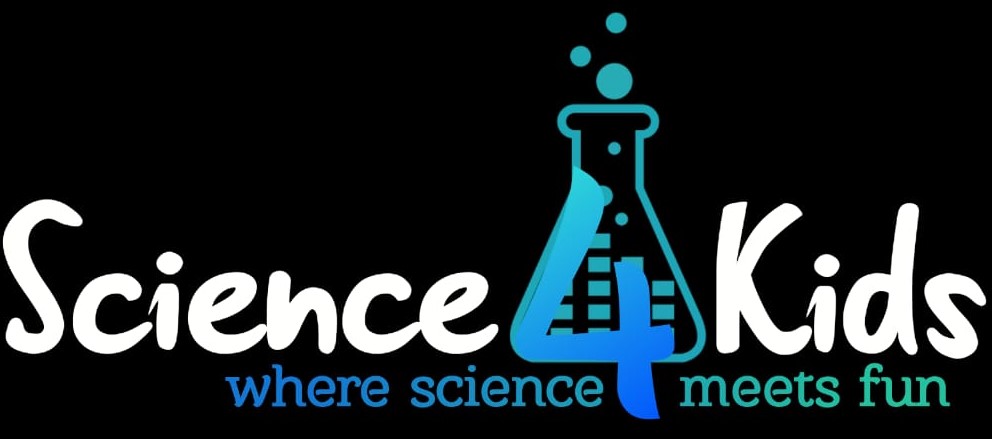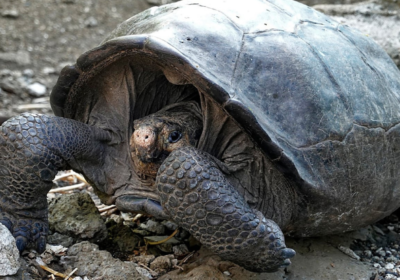Kids are inquisitive about everything around them. Early days of every little kid are filled with lots of ‘whys.’ But they do not get an answer for every question. Sometimes parents feel so flustered by the inquisitiveness of kids that they just ignore them. They feel that it may not be easy to give an answer to many questions. But an everyday science question has to have a simple answer, right? So what are the common questions that every parent faces? Let us try to explain them in the simplest possible manner.
1. Why is the sky blue in color?
This might be the most common everyday science question that little children ask. Take a preschooler to a garden or park, and you are likely to hear the question, “why does the sky look so blue?” As a kid, I asked this question, and my granny told me that God had painted the sky in blue color. For a long time, I wondered why God did not think of trying any other color for the sky. So let me repeat the question. What causes the sky to look blue in color?
As we all know, sunlight is white, and made up of seven different colors. They are violet, indigo, blue, green, yellow, orange and red or VIBGYOR in short. When the sunlight passes through the Earth’s atmosphere, it hits gases and other particles in the atmosphere. As a result, sunlight scatters in all directions. All the seven colors in the white light are of different wavelengths. The colors with shorter wavelengths get scattered more than those with longer wavelengths. Blue has the shortest wavelength, and red has the longest wavelength. Blue light scatters more, and so we see the sky in blue colour.
The same explanation applies to the sky appearing in red color in twilight. During sunrise and sunset, the sun is farther from the Earth than during the day, and so, sunlight has to travel more to reach our eyes. As blue light scatters all around, it does not reach our eyes as much as the red light that travels with least scattering. This is the simplest explanation for kids. If you wish to understand more about this, you should learn about Raman Effect.

2. Why does a cut apple turn brown?
We have seen that cut apples turn brown very quickly. They look rotten and unimpressive if we keep them in the open for a while. Why do the cut apples turn brown? This happens due to a chemical reaction called enzymatic browning. Apples contain an enzyme called polyphenol oxidase (PPO). They also contain naturally occurring organic compounds called polyphenols. Under normal conditions, the PPO and polyphenols present in the apple do not touch each other. When we cut the apples, it damages the cells and brings the PPO and polyphenol together. It also exposes them to oxygen. The presence of oxygen triggers enzymatic browning which causes the apple tissues to turn into a brown color.
As a simple explanation for this everyday science question, we can just say that the cut apples turn brown because the inner portion of the apple reacts with oxygen in the air. Can we prevent cut apples from turning brown? Yes, we can. Keep the slices in the refrigerator. This will slow down enzymatic browning to a great extent. Alternatively, you can coat the apples with honey or sugar syrup so as to reduce their exposure to oxygen. So next time you have a few apple slices left, use this information.
3. Why do we hear echo over mountains?
This is a question that kids ask whenever we travel to hill stations. They love to shout from mountain tops, just to hear the mountains shouting back to them. In fact, even we adults love hearing echoes, don’t we? But why do we hear echoes and why only in some places? An echo is nothing but reflected sound. As we know, sound travels in the form of waves. When the sound waves hit a hard surface, they bounce back. You can think of it like a rubber ball that bounces back when it hits a wall.
If sound waves bounce back whenever they hit a hard surface, why don’t we hear an echo when we talk in a room? Let me explain this in simple terms. The extent to which we can hear the reflected sound will depend on its magnitude and the delay from the original sound. If the reflected sound wave is too feeble, it won’t be audible. Likewise, if the time gap between the original sound and its echo is too less, our ears cannot distinguish both. So the larger the distance between the origin of the sound wave and the surface that obstructs it, the clearer echo will be. This is why we can hear a clear echo from mountain tops where sound travels a long distance before it hits an obstruction.
Similarly, we can hear an echo in an empty room, but not if there is furniture in it. This is because the furniture, curtains, and cushions in a room are soft surfaces which do not reflect sound waves as much as the hard concrete wall. So next time you go to a hill station, you can hear the echo, and explain it as well.

4. Why can’t I see stars during the day?
We all love gazing at star-studded skies in the night. The sight of innumerable sparkling yellow dots in the sky is so marvelous. Why can’t we see the stars during the day? Where do the stars hide during the day? We may have asked this question as kids. This is a very simple question with an easy answer. Stars are always present in the sky. During the day, we don’t see stars because of bright sunlight. The Sun, the star that provides us the light and energy to survive, shines so brightly that it blocks the light from the other stars which are farther away from our planet. We see the sunlight scattered into a blue color during the day, which happens due to the particles present in our atmosphere. But the light from the other stars are not visible during the day as they are too distant, and as the sun rays are far more powerful.
5. How do rainbows form?
Well, this may not be an everyday science question. But this is a question that kids will definitely ask if they spot a rainbow in the sky. How do these magical colours appear in the sky as if someone has painted them in perfect colors? Here is the answer. Rainbows appear when sunlight hits the rain or water droplets that remain suspended in the air. As we all know, white light or the sunlight consists of seven different colors. These colors are VIBGYOR or violet, indigo, blue, green, yellow, orange and red. They are of different wavelengths. When light rays pass through the water droplets, they deflect or bend. The rate of deflection is different for different colors. So when there are too many droplets in the air, sunlight passing through them is deflected to a large extent. This causes the colors to split up visibly.
We can normally see rainbows in the direction opposite to sunlight. You may not clearly see all the colors of the rainbow. For a rainbow to be clearly visible, you must be standing with the sun behind you, and not overhead. We normally see rainbows in the mornings or evenings. Are you missing the sight of a rainbow? You can make your own rainbow at home. Check out here, and make a rainbow at home!

6. Why do stars twinkle?
Twinkle, twinkle, little star! But why do the stars twinkle? We have all asked this question at least once in our lifetimes. In fact, stars do not twinkle! It is the peculiarity of the earth’s atmosphere which causes us to think that stars twinkle. The atmosphere of the earth is divided into many layers with different densities and temperatures. We can say that our atmosphere is always moving. Light from a distant star has to travel past many layers of earth’s atmosphere before it reaches our eyes. As we saw with the formation of rainbows, light rays bend while passing from one medium to another. This process is called refraction. So, as the light rays pass through the moving air with different densities and temperatures, it deflects many times. This continuous deflection is what gives us the appearance of the twinkling of stars.
This brings us to another doubt which only older children will ask. Why don’t the planets twinkle? Planets are closer to the earth than the stars. Stars are so distant from us that the light coming from them appears to be from a single point. Planets are closer, and so appear bigger. The light from the planets seems to be coming from many points, and is not as pin-pointed as that from the stars. Therefore, the dimming and brightening effects due to refraction are balanced against each other. They do not appear to twinkle because of the difference in their distance from the earth.

7. Why do we cry while cutting onions?
My son hated onions when he was a little kid. It made his mother cry! Kids get bewildered when they watch their mothers or fathers crying in the kitchen. “No dear, it is just the onions.” Here goes your standard reply. But their next question may leave you flabbergasted. Why do onions make us cry? To answer this everyday science question, we need to learn the names of some chemicals and gases. Onions contain certain enzymes and acids which are exposed when we cut them. They join to form a chemical called syn-propanethial-S-oxide. This is a volatile chemical and easily vaporizes into sulphur gas.
The burning sensation that we feel in our eyes while cutting onions is because of this gas. Our body’s defence mechanism reacts when the gas hits the eyes, and triggers the formation of tears. So the culprit here is the gas emitted from onions. There is no need to memorize all the difficult chemical names. We can simply tell the kids that onions give out an irritating gas when we cut them. And this causes our brains to react, and to produce tears. So these are good tears!
8. Why do we yawn?
How many times did you yawn while reading this? Not once? Well, that’s good for me. We always associate yawning with sleep or boredom. But why exactly does this happen? This is an everyday science question for which scientists do not have a definite answer. They have formed several theories about the reason behind yawning, but there is no single answer to this question. Some theories say that yawning is a sign given by the brain to the body to stay alert. When we are bored, our breathing becomes shallow. Our brain triggers a yawn so that we take in more oxygen and become more alert.
Don’t we sometimes stretch our hands and legs involuntarily while yawning? Some theories suggest that it is a mechanism to flex and relax tired muscles. Moreover, yawning is contagious as well! You watch the person sitting next to you yawn, and the very next moment it catches you. Read the Facts About Yawning to understand why yawning is contagious.

9. Why doesn’t it hurt when we cut our hair?
This may be the simplest everyday science question. Does a haircut cause pain? No. Why? This is because our hairs are not alive! Don’t create confusion by giving such statements. Hairs are very much a part of our body, and they are alive at their roots. But the long strands that come out from the hair follicles are not alive. They are made up of proteins called keratin. We feel pain when we pull out the hair from the roots, but not when we cut them. If we cut our hands, it definitely causes pain. Do you know the reason why we feel pain when we cut our hands? It is because the nerves in our hands send signals to the brain. Our hairs do not contain any nerves. That is why we call it dead. When we cut our hair, there are no nerves to transmit the pain signals to the brain. Think of another body part that doesn’t hurt while cutting. Nails of course!




